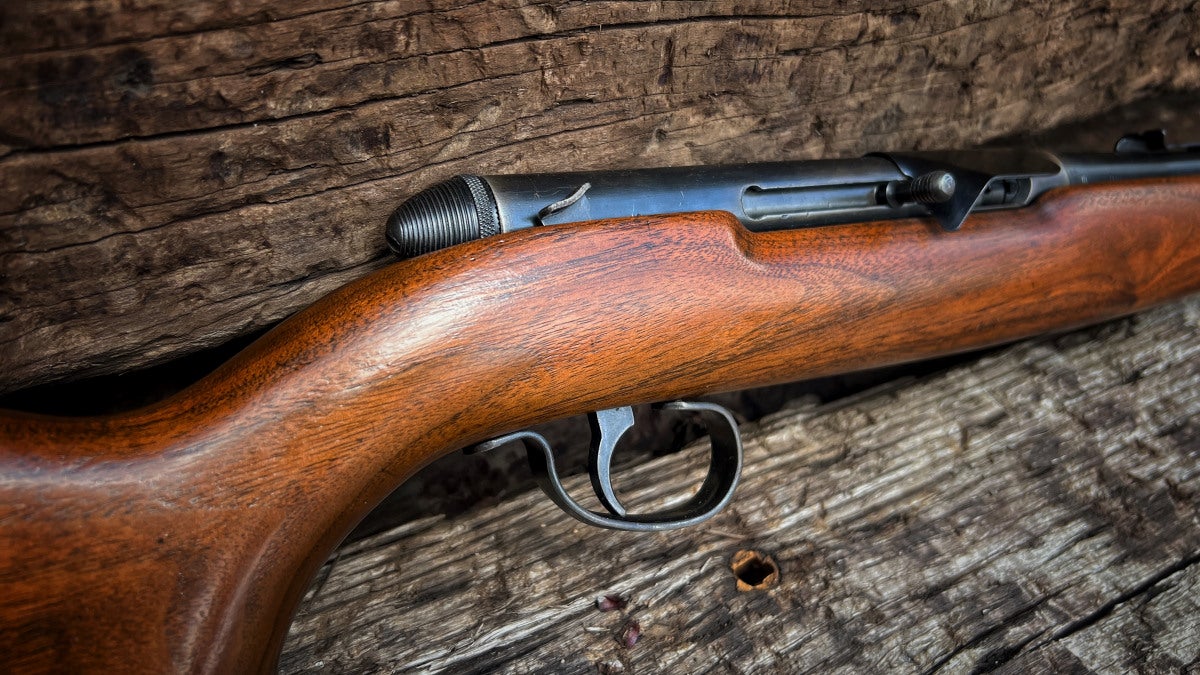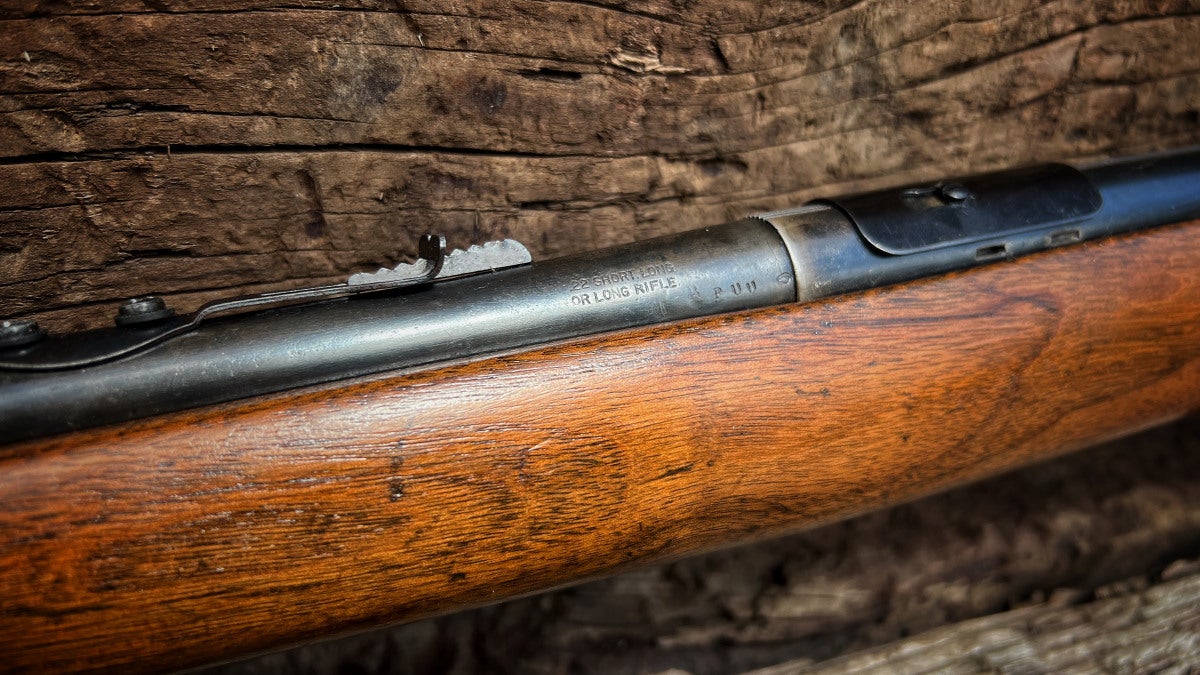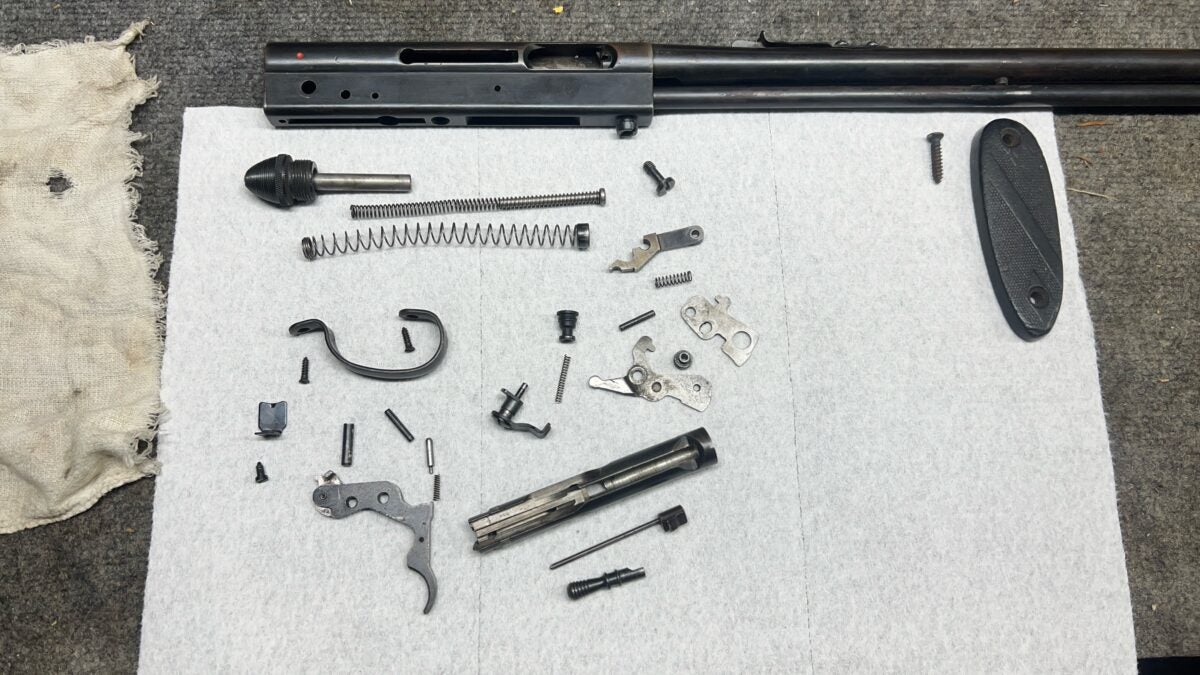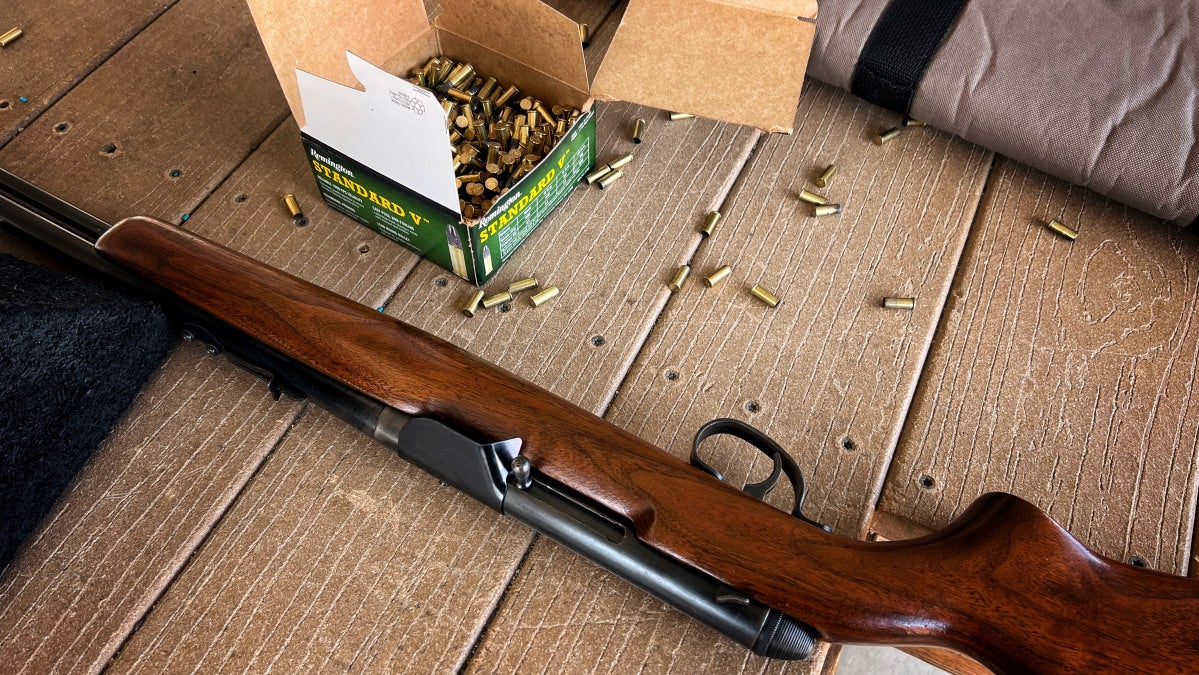Curious Relics #112: The Remington 550-1 .22 Rimfire Part III
Sam.S 06.11.25

Welcome, if you are a newcomer to this fun bi-weekly segment of AllOutdoor.com! Welcome back to our exploration of the Remington 550-1 .22 rimfire rifle! We’ve covered the historical development and various model distinctions in our previous installments. Today, we’re diving into the practical aspects of dating these rifles, their detailed specifications, and what’s available for parts and accessories.
Curious Relics Coverage on AllOutdoor:
- Curious Relics #106: Winchester Model 1911 SL – The “Widowmaker”
- Curious Relics #107: Widowmaker Variations – Winchester 1911SL Part II
- Curious Relics #108: Dating A Widowmaker – Winchester 1911 SL Part III
- Curious Relics #109: The Winchester Widowmaker 1911 SL Part IV
Welcome to our recurring series of “Curious Relics.” Here, we want to share all of our experiences, knowledge, misadventures, and passion for older firearms that one might categorize as a Curio & Relic – any firearm that is at least 50 years old according to the ATF. Hopefully along the way you can garner a greater appreciation for older firearms like we do, and simultaneously you can teach us things as well through sharing your own expertise and thoughts in the Comments. Understanding the firearms of old, their importance, and their development which lead to many of the arms we now cherish today is incredibly fascinating and we hope you enjoy what we have to share, too!
Dating Your Remington 550-1
Dating a Remington 550-1 is generally straightforward thanks to Remington’s consistent barrel date coding system. However, there are multiple ways to narrow down the production timeframe, which is helpful when barrel codes are worn or unclear.
Using the Model Designation
The simplest method to establish a general timeframe is examining the model marking itself:
- “550 1” (no dash): Manufactured 1946-1948
- “550-1” (with dash): Manufactured 1949-1971
This 25-year spread for the dashed models might seem broad, but it’s where the barrel date codes become essential for precise dating.
Remington’s Barrel Date Code System
Remington firearms manufactured after 1921 feature a code stamped on the left side of the barrel near the receiver. For the 550-1, this code consists of two or three letters that correspond to the month and year of manufacture.
Month Codes (using the word “BLACKPOWDERX”):
- B = January
- L = February
- A = March
- C = April
- K = May
- P = June
- O = July
- W = August
- D = September
- E = October
- R = November
- X = December
Year Codes for 550-1 Production Period:
- K = 1941 (550A only)
- L = 1942 (550A only)
- MM = 1943 (550A only)
- NN = 1944 (550A only)
- PP = 1945 (550A only)
- RR = 1946
- SS = 1947
- TT = 1948
- UU = 1949
- WW = 1950
- XX = 1951
- YY = 1952
- ZZ = 1953
- A = 1954 (Note: Single letter returns to alphabet)
- B = 1955
- C = 1956
- D = 1957
- E = 1958
- F = 1959
- G = 1960
- H = 1961
- J = 1962
- K = 1963
- L = 1964
- M = 1965
- N = 1966
- P = 1967
- R = 1968
- S = 1969
- T = 1970
- U = 1971
Reading the Code: A Personal Example
My grandfather’s rifle bears the code “PUU” which translates to June (P) 1949 (UU). This places it in the very early 550-1 production, just after the transition from the “550 1” to “550-1” marking system. This makes sense with the dash marking visible on the receiver.
Alternative Dating Resources
While the barrel codes are the most reliable method, additional resources are available for verification. The Remingtonsociety.org maintains comprehensive date code charts, and OldGuns.net also provides Remington dating information. Collector forums often have members willing to help verify questionable codes.
The dating system is reliable for Remington rifles since the company rarely changed barrels on a customer’s rifle during service work, unlike shotguns, where barrels were often swapped.
Specifications: Remington 550-1
Your 550-1 may not have a serial number, and that’s perfectly normal. Long guns manufactured before the 1968 Gun Control Act weren’t required to have serial numbers. Many manufacturers, especially on their economy lines like the 550-1, simply didn’t bother with serialization. This doesn’t affect the rifle’s legality or collectibility.
- Production: Approximately 730,000 manufactured (1946-1970)
- Original MSRP: Approximately $35-45 (1946-1970)
- Today’s Equivalent: Approximately $350-450 (adjusted for inflation)
- Caliber: .22 Short, .22 Long, .22 Long Rifle
- Action: Semi-automatic, blowback with floating chamber
- Magazine: Tubular, approximately 15-22 rounds (capacity varies by cartridge length)
- Barrel Length: 24 inches
- Overall Length: 43 inches
- Weight: Approximately 6.2 pounds (unloaded)
- Barrel Twist: 1:16 inches
- Stock: One-piece walnut or hardwood with plain semi-pistol grip
- Finish: Blued steel barrel and receiver
- Sights: Open iron sights with adjustable rear
- Safety: Manual thumb safety located on the right side of the receiver
- Extractor: Single extractor (simplified from 550A dual extractor design)
- Special Features: Shell deflector
Aftermarket Parts and Accessories: Remington 550-1
Finding parts for the Remington 550-1 requires patience, but isn’t impossible. The rifle’s long production run and relatively high production numbers mean components surface regularly. Primary sources include Numrich, Jack First, CFN Parts, Old Arms of Idaho, and eBay. Numrich remains the most reliable source for common components like firing pins, extractors, springs, trigger parts, and occasionally stocks. eBay can yield good results; make sure to save your search to find what you need.
Accessories
The 550-1 has virtually no dedicated accessories available, which isn’t surprising given its era and market position as a practical working rifle. Period scopes with custom mounts occasionally surface on auction sites, along with original leather slings and vintage gun cases. The lack of modern accessories actually reinforces the rifle’s character as a tool from an era when firearms served specific purposes without the customization culture of today.
Conclusion: Remington 550-1
The Remington 550-1’s dating system is straightforward once you understand the barrel codes. The specifications show a well-built rifle that was reasonably priced for its era and remains affordable today as a collector’s piece. Parts availability is adequate to keep these rifles running, though patience is required for specific components.
In our final installment, we’ll take the 550-1 to the range for some practical shooting evaluation. We’ll test its famous multi-cartridge capability, assess accuracy, and discuss what makes this rifle special from a shooter’s perspective.
In closing, I hope our Curious Relics segment informed as well as entertained. This all was written in hopes of continued firearm appreciation and preservation. We did not just realize how guns were supposed to look and function. It was a long and tedious process that has shaped the world we live in. So, I put it to you! Is there a firearm out there that you feel does not get much notoriety? What should our next Curious Relics topic cover? As always, let us know all of your thoughts in the Comments below! We always appreciate your feedback.


